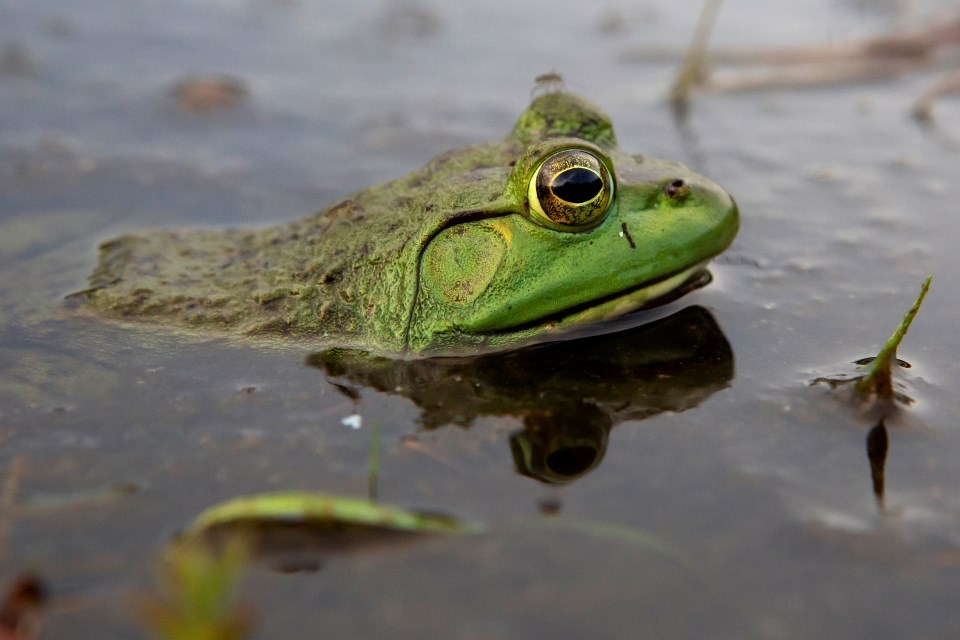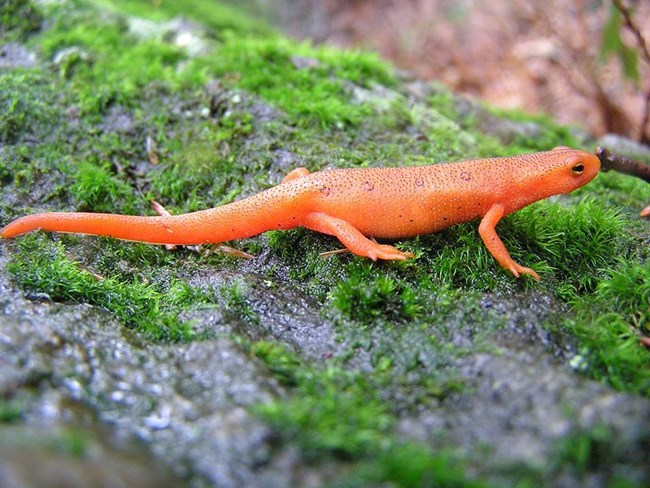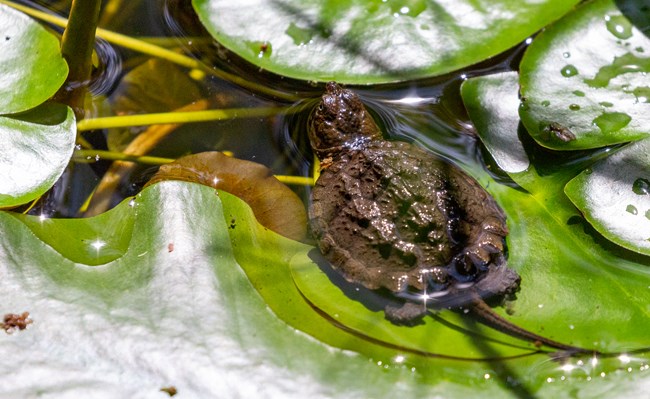AmphibiansMost people in New England associate the sound of spring peepers and American bullfrogs with the coming of springtime. These are two of approximately 11 amphibian species that live in Acadia's wetlands, streams, and ponds. We have one toad species, six species of frogs, and four salamander species. 
Will Greene, NPS, Friends of Acadia 
NPS Photo ReptilesAcadia only has seven known species of reptiles. This includes five snakes and two turtles. Fortunately for visitors, none of the snakes are venomous. Probably the most common and best known is the garter snake . These cold-blooded animals need to warm their bodies up in the sun, especially on cool mornings, so be courteous and don't disturb them. Other snakes found in Acadia are the smooth green snake, redbelly snake, ringneck snake and eastern milksnake. Eastern milksnakes are often mistaken for rattlesnakes because they practice mimicry. Eastern milksnakes will flick the tip of their tail in gravel or leaf litter to simulate the sound of a rattle. This behavior and their striking red and white colors help protect these snakes from a variety of predators and surprise many visitors in the park. 
Will Greene, NPS, Friends of Acadia Learn More |
Last updated: February 12, 2025
